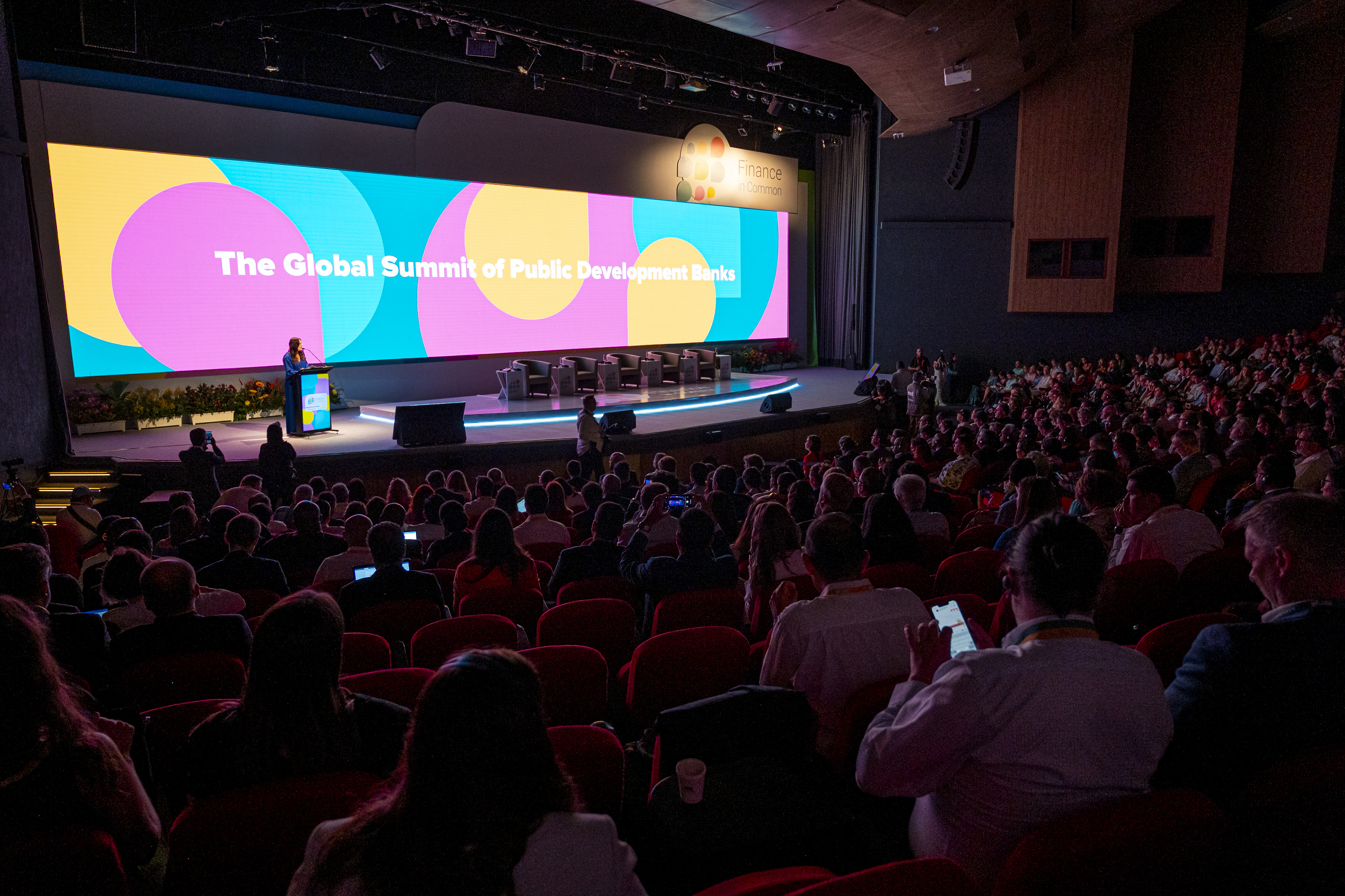
IDFC releases its first Gender Mapping on the occasion of the FiCS
25 August 2023IDFC just released its first Gender Mapping monitoring and reporting tool for the IDFC members to screen and track their commitments to gender equality.
- This first IDFC Gender Finance Mapping, for 2021, was conducted with 9 IDFC members: AFD, BICE, CABEI, CAF, DBSA, HBOR, KFW, NAFIN, TSKB. They reported that they committed close to €10 billion for Gender Focused/Gender Transformative and Gender Responsive/Gender Sensitive projects. This is almost 20% of the reporting PDBs’ new commitments in 2021 (€54.5bn).
- It shows how PDBs integrate gender considerations in their investments, with gender as either the primary or secondary focus. It is a key driver to identify where the needs are, which sectors we should prioritize, etc. to reach SDG 5.
What is the purpose of the Gender Tracker?
The IDFC Gender Tracker is a monitoring and reporting tool for the IDFC members to screen and systematically track their commitments to gender equality.
It is a qualitative instrument which recognizes and accounts for the total financing allocated to gender considerations with gender as either the primary focus or secondary focus.
This instrument which is based on the collected information from the reporting members functions as a substantial mapping, where IDFC aims to continue this periodic mapping in the next years.
Which methodology are you applying?
The IDFC Gender Tracker was developed with the technical assistance of Frankfurt School of Finance and Management who conducted a comprehensive overview of the existing tools and methodologies in the international development community such as OECD DAC Gender Equality Policy Marker and 2X Challenge.
Based on this benchmarking, a specific methodology for the IDFC was developed while picking up the best ideas to reflect the reality and abilities of the members for such reporting.
As a result, a multi-layer approach was adopted which includes 3 main classification categories depending on the gender-responsiveness of a project, where:
- Category 2 represents “Gender Focused/Gender Transformative” projects where reducing gender inequalities is the main objective.
- Category 1 represents “Gender Responsive/Gender Sensitive” where gender considerations are incorporated at a certain level but reducing gender inequalities is not the main objective.
- Category 0 represents “Gender Neutral” where there are no gender considerations.
Along these lines, the IDFC Gender Tacker provides members with a set of clear reporting guidelines for their gender financing operations, and for this purpose, a handbook was developed which provides practical and useful information and explanations on the categorization of the interventions.
Which trends could you see appealing to these first results?
The first IDFC Gender Finance Mapping report as of 2021 YE was conducted for 9 voluntary IDFC members which are: AFD, BICE, CABEI, CAF, DBSA, HBOR, KFW, NAFIN, TSKB.
According to the preliminary results, the participant members committed close to 10 billion Euros for Category 1 and 2 projects that is almost 20% of their total new commitments in 2021.
As part of this commitment, we look forward to applying this tracker to all IDFC members and continuing our capacity building and knowledge sharing practices.
IDFC Gender Equality Working Group – First Gender Tracker – YouTube


